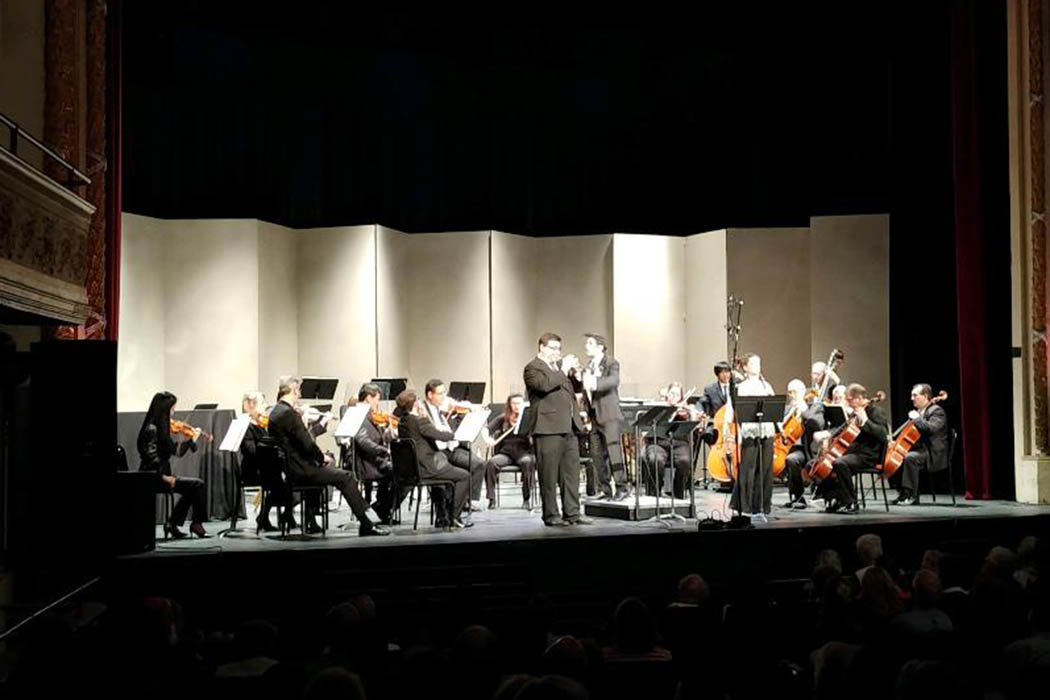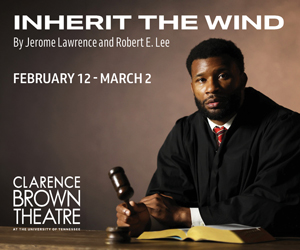Creating concert programs that satisfy and challenge an audience, as well as providing intellectual connections that intrigue the listener, is an art—an art that Knoxville Symphony Orchestra maestro Aram Demirjian obviously relishes. His program for the final concert of the orchestra’s Chamber Classics Series this season on Sunday may have seemed like four disparate works with neither historic nor musical connections—which, in fact, was true. The connection was left to each listener’s imagination and experience based on the title “Mozart in the City,” and what moods and sonic textures that the concept of “city” evokes. As it turned out, the four diverse pieces on Demirjian’s program worked really well together and were a compelling showcase for KSO players.
Demirjian opened and closed the first half of the afternoon concert with Mozart’s “Linz” Symphony, the No. 36 in C Major, K. 425. The nickname, of course, refers to the city of Linz where the composer was visiting, and Mozart’s decision to create a work on short notice to satisfy a local request. The orchestra handled it nicely, with plenty of crisp details to keep the intrigue going.
A lot of the audience, though, seemed to be waiting for the second half, and, as it turned out, with valid expectations. Demirjian opened the second half with a string orchestra adaptation of Boccherini’s String Quintet in C Major, “Night Music of the Streets of Madrid,” that the composer himself described as “totally useless, even ridiculous, outside Spain, because the audience cannot hope to understand its significance…” Of course, Boccherini could not possibly predict how the future, or other cultural milieus, would react; that reaction is one of delight at the surprising freshness that adaptations yielded. The added snare drum took a commanding role in this performance.
The concert moved into the 20th Century with Aaron Copland’s Quiet City, a work for solo trumpet and English horn with string orchestra. The work began life as incidental music—with different instrumentation—for the play Quiet City by Irwin Shaw, later becoming the stand-alone piece that we hear today. Despite its original dramatic context, the work has a haunting, moody quality that is generically urban in its evocation of loneliness in a city environment. The descriptive contrast between the tonal qualities of the trumpet and English horn are where the work’s narrative intrigue lies. In this performance, KSO principal trumpet Phillip Chase Hawkins gave his passages a radiant clarity while never losing that understated sadness. KSO principal oboe Claire Chenette took the English horn solo, beautifully and subtly tailoring the details of the passages to reflect the instrument’s natural moodiness that, too, evokes a sense of urban sadness. The orchestra’s contribution to that poignancy was a marvelous sonic balance of wistfulness and optimism.
Having moved far afield from Mozart’s city of Linz, Demirjian closed with HK Gruber’s Manhattan Broadcasts. In a style of derivation that only composers can get away with, Gruber’s charming work flows from elements of big-band jazz—thanks to jazz guitar, mallet instruments, bongos, and a drum kit—that noticeably got some older audience members moving in their seats. Younger listeners merely smiled, no less enchanted, at the really addictive rhythmic textures and melodic energy. Yes, it was swell.
Sadly, the Sunday afternoon Chamber Classics Series concerts at the Bijou are over for the season. But, they’ll return next season with a rather eclectic line-up, beginning in September with contrasting works by Mozart and Tchaikovsky, and an all-Beethoven concert in January as part of the Beethoven 250 celebration.






